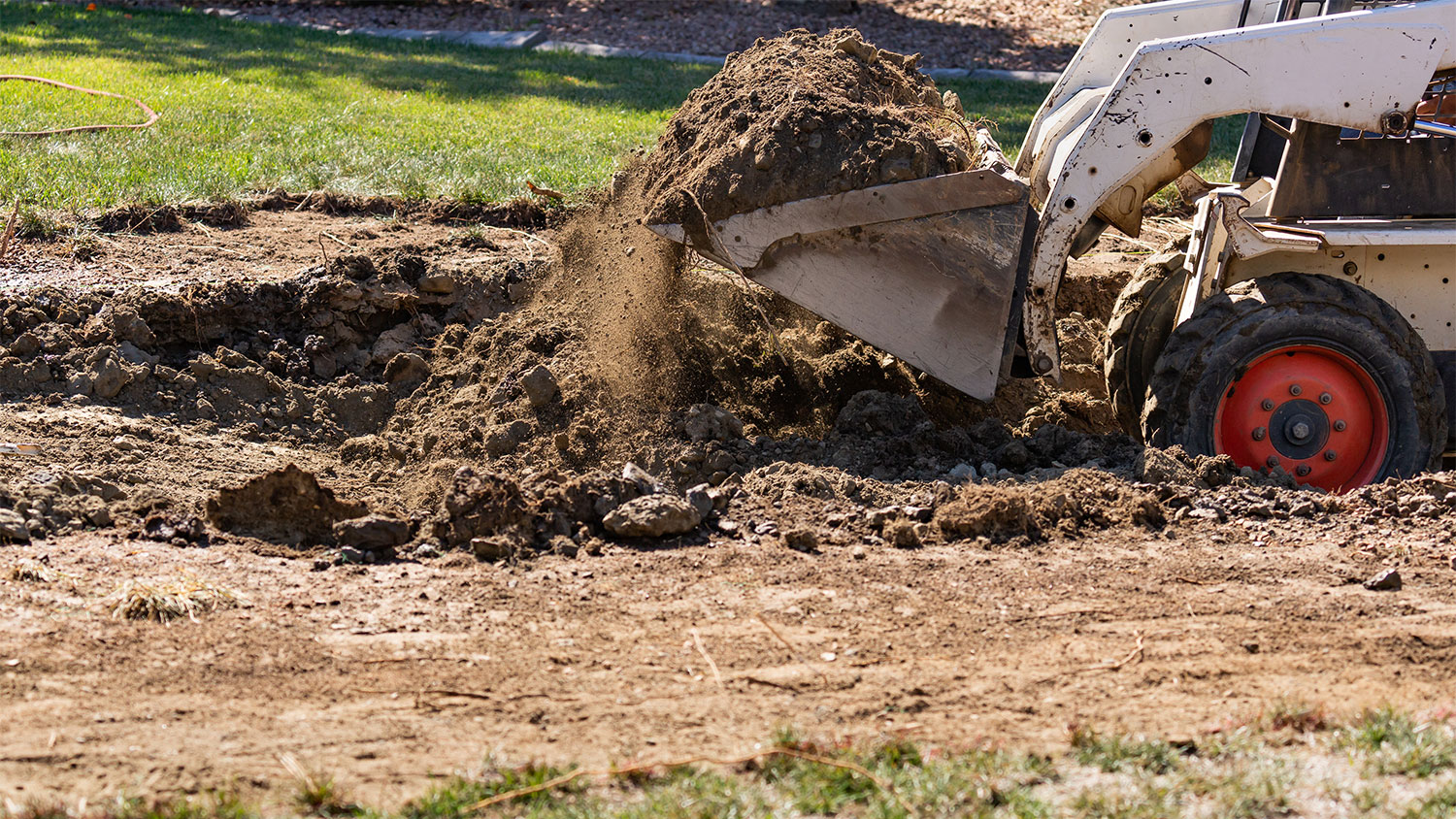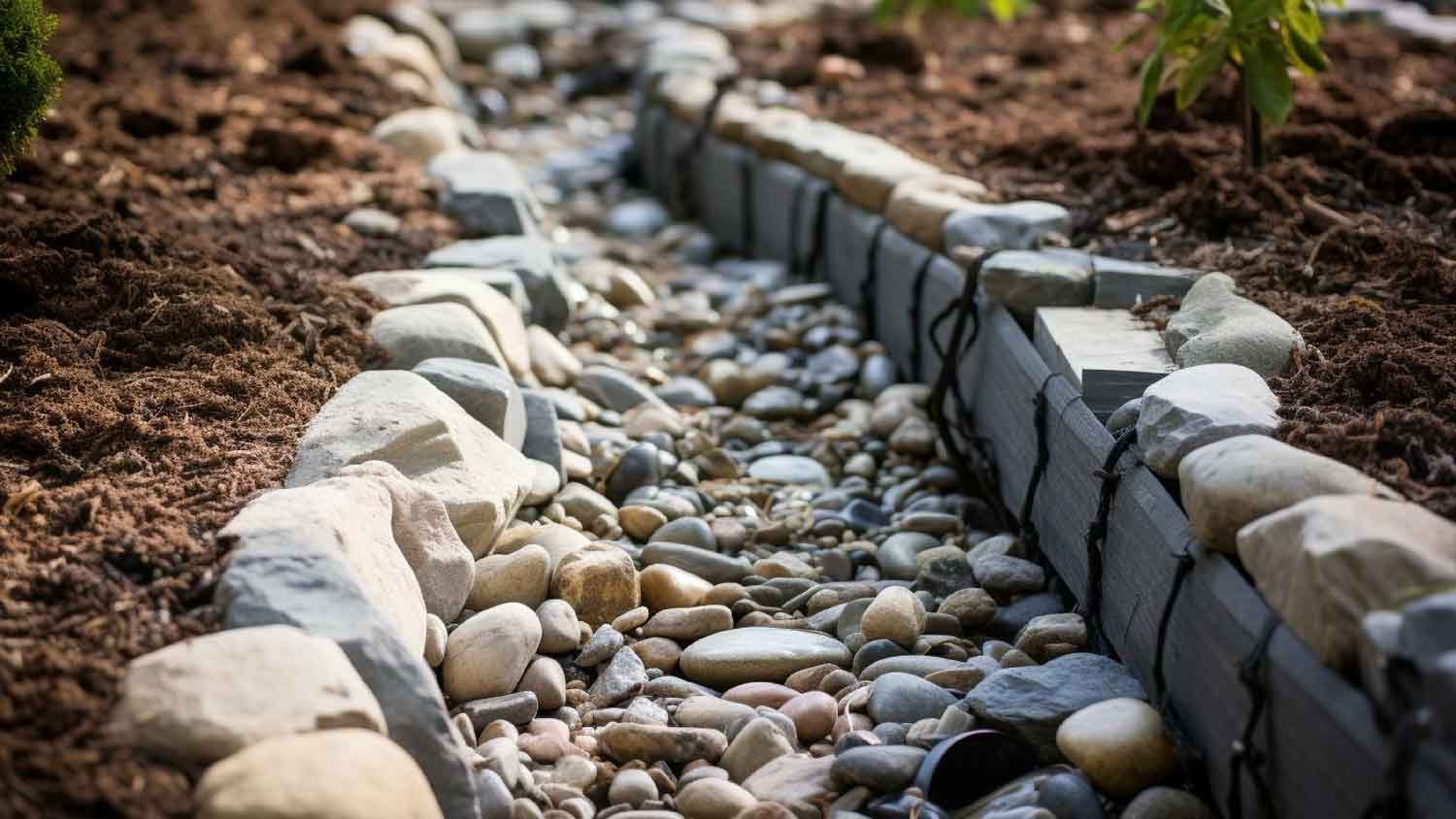
Discover how much trees cost to plant, exploring how factors like size, quantity, materials, and labor affect the total cost.
The average cost of mulching is $180


Average mulching costs range from $100 to $350, with most homeowners paying $180.
The total project cost will depend on the mulch type, quantity, labor rates, and delivery fees.
Mulching benefits your property by retaining moisture, suppressing weeds, and improving soil quality.
Hiring a professional to mulch your yard regularly promotes healthy plant growth and can increase your property's value.
This article was updated using automation technology and thoroughly reviewed for accuracy by HomeAdvisor Editor Ryan Noonan.
The average cost to mulch your yard is $180, with most projects ranging between $100 and $350. Costs vary based on mulch type, quantity, labor, and delivery fees. Mulching not only enhances the beauty of your landscape but also protects your garden beds by retaining moisture and suppressing weeds. Hiring a professional mulching service—which costs between $35 and $170 per cubic yard—ensures even coverage, proper depth, and a polished look while saving you time and effort.
The cost of mulching varies depending on the size of your yard, the type and color of mulch you choose, and local labor rates.
Mulch prices vary depending on how much you buy and where you purchase it. There are two main options–buying bags from a local garden center or purchasing in bulk by the cubic yard. Bags contain an average of 1.5 to two cubic feet of mulch, cost between $2 and $15 each, and cover about eight square feet. For larger projects, buying in bulk is more cost-effective and convenient. Bulk mulch is priced at $20 to $80 per cubic yard, plus a delivery fee of $50 to $100, with lower prices the more you buy.
The cost of mulch ranges from $35 to $170 per cubic yard, depending on the material. Inorganic mulches, like plastic or gravel, can cost well below the norm, while a material like seashell could cost way more. Most homeowners opt for softwoods, whether shredded bark or wood chips.
| Mulch Type | Average Cost per Cubic Yd, |
|---|---|
| Pine bark | $40 |
| Straw | $40 |
| Shredded hardwood | $45 |
| Hemlock | $50 |
| Cedar | $110 |
| Bark | $95 |
| Cypress | $115 |
| Rubber | $90 |
| Plastic mulching sheet | $35 |
Even if the cost of a landscape designer isn’t in your budget, you can still use mulch to spruce up your property design. Colored mulch can provide a striking contrast to plants or complement your home and existing landscape. It’s important to remember that most vibrantly colored mulches are dyed and, in some cases, may contain colored rubber rather than organic wood.
| Mulch Color | Average Price Range |
|---|---|
| Brown | $25–$140 |
| Red | $100–$140 |
| Tan | $30–$60 |
| Black | $40–$150 |
| Green or blue | $40–$60 |
Expect to pay between $20 and $60 per cubic yard for mulch installation services near you. Traditional mulching services cost between $20 and $50 per cubic yard, while mulch blowing services, which use specialized equipment to apply mulch efficiently, cost $40 to $60 per cubic yard. Mulch blowing is ideal for larger areas or hard-to-reach places. On top of labor fees, you’ll also need to budget for bulk mulch delivery, which costs $20 to $80 per cubic yard, with an extra flat fee of $50 to $100 for delivery. For large projects, delivery sizes often range from 10 to 30 cubic yards per single-axle truck.
While mulch is relatively inexpensive and doing the project yourself can save on labor costs, it’s physically demanding work, especially without the proper equipment or a suitable vehicle to transport large quantities. Hiring a professional mulching company saves you time and effort while ensuring the project is done correctly. Even if you decide to spread the mulch yourself, you might consider hiring a local mulch delivery service to supply the materials.
No place is more important than your home, which is why HomeAdvisor connects homeowners with local pros to transform their houses into homes they love. To help homeowners prepare for their next project, HomeAdvisor provides readers with accurate cost data and follows strict editorial guidelines. After a project is complete, we survey real customers about the costs to develop the pricing data you see, so you can make the best decisions for you and your home. We pair this data with research from reputable sources, including the U.S. Bureau of Labor Statistics, academic journals, market studies, and interviews with industry experts—all to ensure our prices reflect real-world projects.
From average costs to expert advice, get all the answers you need to get your job done.

Discover how much trees cost to plant, exploring how factors like size, quantity, materials, and labor affect the total cost.

Learn who to hire to regrade your yard. Compare grading contractors vs landscapers, see the process, timelines, and average costs to plan confidently.

Wondering who to hire to fill in an uneven lawn? See if a landscaper or general contractor fits your project and learn what to expect before you book.

Curious who to hire for mulching? Compare mulching companies, landscapers, and tree services, plus DIY vs. pro costs, to choose the right help today.

How much river rock will your next landscaping project need? Find out with our river rock calculator.

How much topsoil do you really need for your project? Dig into this topsoil calculator to find out.